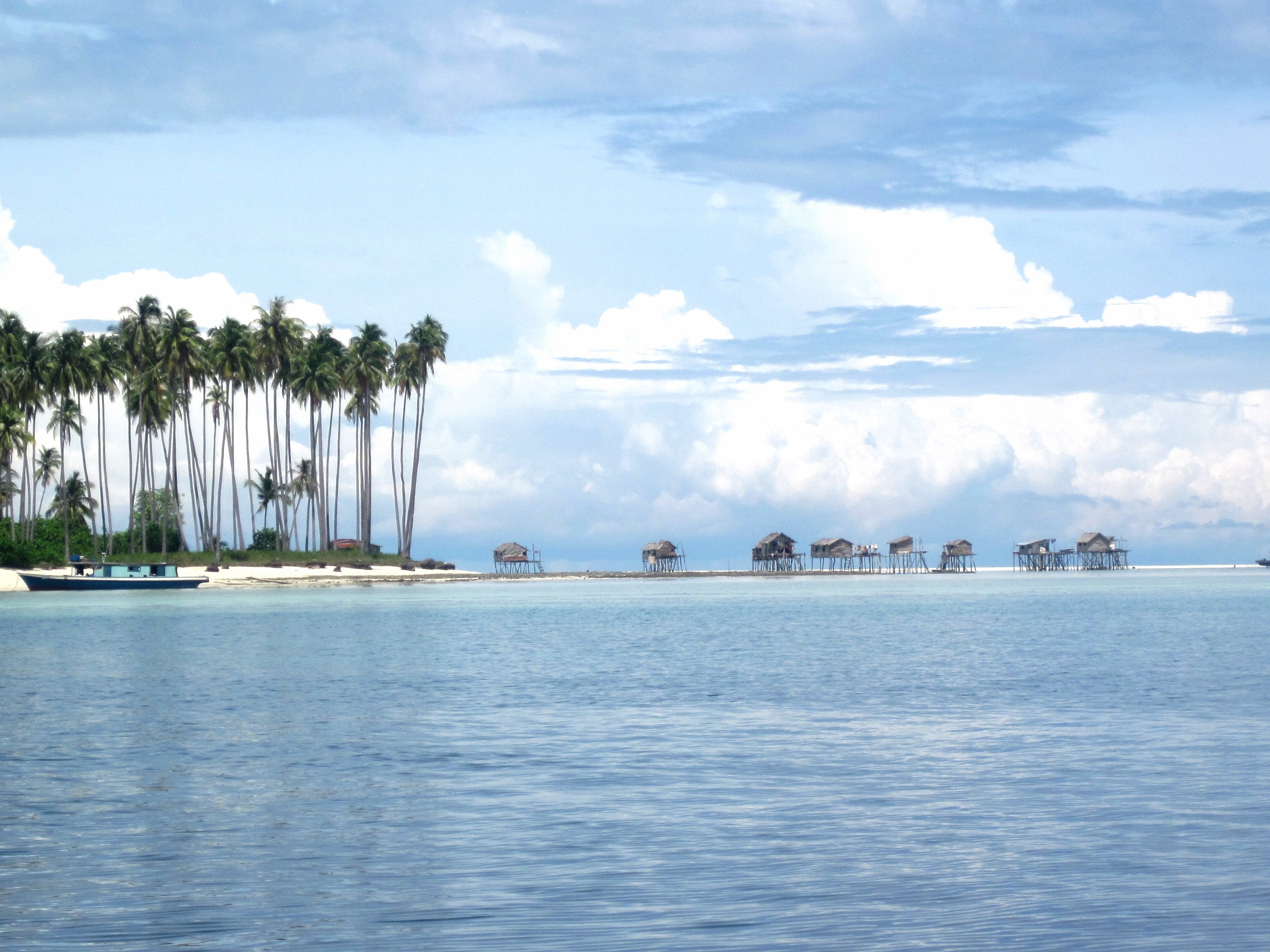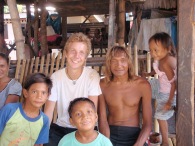The Displacement of Bajau Laut: A Lost Haven in Sabah
In a contentious move aimed at allegedly enhancing security and curbing cross-border crime, Malaysian authorities have evicted over 500 Sama Dilaut individuals from their homes within Tun Sakaran Marine Park off the coast of Semporna, Sabah, starting on June 4. The Sama Dilaut saw their coastal stilt huts demolished or burned by enforcement officials, sparking a wave of criticism from rights groups and local activists.
Historical and Cultural Significance
The Sama Dilaut have been part of the marine landscape in Semporna for centuries. Their picturesque traditional settlements have attracted global attention for their unique architectural style and seemingly harmonious coexistence with nature. These settlements were not just homes but symbols of eco-living and sustainable practices, resonating deeply with any human. Bod Gaya, in particular, was renowned for its lovely stilt houses located next to a mountain top inside the Marine Park, as well as its boat-building activities of both houseboats and dugout canoes, a craft that has been passed down through generations.

Government’s Stance
Sabah’s Minister of Tourism, Culture, and Environment, Christina Liew, defended the eviction operation, stating that it was necessary to uphold the sovereignty of the country’s laws. According to authorities, unauthorized activities such as illegal fishing, building without permits, and unpermitted farming within protected areas managed by Sabah Parks necessitated the crackdown. She also highlighted security concerns, including cross-border crime.
Liew claimed that some homeowners might have intentionally burned their own houses to garner sympathy and virality on social media. According to the authorities, notices had been sent to 273 unauthorized settlements, and between Tuesday and Thursday, June 4 to 6, no less than 138 structures were demolished inside the Tun Sakaran Marine Park.
Humanitarian Concerns and Advocacy
The Sama Dilaut are mostly born without nationality documents, which limits their access to basic amenities such as healthcare and education. This lack of documentation means they are often treated as undocumented migrants, living in constant fear of detention and deportation. Local activists and rights groups have condemned the evictions, calling for the government to halt these actions and ensure the Sama Dilaut’s safety and protection.
Mukmin Nantang, founder of the social advocacy group Borneo Komrad, criticized the government’s actions as cruel, noting that the Sama Dilaut have lived in the area since before the establishment of modern borders. The destruction of their homes and forced displacement raises serious humanitarian issues, as the community lacks alternative housing options and struggles to understand and comply with local laws.
Pusat Komas, a human rights group, has called on the state to provide alternative homes for the displaced and address documentation issues to ensure fair treatment and access to essential services for the Sama Dilaut. The advocacy emphasizes the need for a humane approach that respects the Sama Dilaut’s way of life and their historical connection to the region.
Personal Insights and Experiences
I have been visiting the area regularly between 2011 and 2023, and I know locals in stilt houses and houseboat owners who normally have their moorage within the marine park. One memorable experience was with a young Sama Dilaut man who took me diving in the shallow waters off the paradise island of Sibuan. He showcased the vibrant marine life of the area, and we spotted a moray eel and clams. He was acutely aware that fishing within the park was prohibited and mentioned that they always fished outside the no-go zone.



Each time I returned to the park, old structures had been replaced with new ones. This constant renewal was a testament to their adaptability and a perfect example of green architecture. New houses always emerged, yet the overwhelming beauty of the settlements remained unchanged.
The key word in Sama Dilaut architecture is adaptability. In the West, we generally aspire for solidity, thick and immovable construction. We don’t build with the elements but rather to master them, to control them. The Sama Dilaut, on the other hand, have learned how to live with the elements and to adapt their construction to the natural environment. Hence, waves, floods, and erosion are minor problems for Sama Dilaut’s settlements—while they have closer access to sea life than anyone else.



However, now something essential has been broken. It is profoundly sad that it was not possible to combine the marine park’s conservation efforts with the traditional settlements and lifestyle of the Sama Dilaut. Even if it is true that illegal fishing and lodging have been issues within these protected areas, the Sama Dilaut lived with the tides and the waves, holding on to ancient traditions. We must also remember the everyday struggles the Sama Dilaut go through—this was one of their last havens. The state’s rationale has taken a new step, prioritizing enforcement over coexistence.
Unworthy Othering
For years, photo safaris have been organized regularly within Tun Sakaran Marine Park, with thousands of tourists handing out crackers to take photos of the “wild” Sama Dilaut. This practice reduces the Sama Dilaut to mere spectacles for tourism, stripping away their dignity and humanity. Tour operators referring to them as “sea gypsies” reflect deep-seated racism in the area.
The Sama Dilaut face statelessness and structural violence, evident in many locals’ aversion to eating with them, disdainful looks on the streets, and the belief that they are destined to live this way. Now, their homes have been demolished, exacerbating the already widespread poverty among the Sama Dilaut.
Final Reflections and Future Implications
Many of the reasons cited by authorities, such as smuggling and national security concerns, also apply to other Sama Dilaut settlements around the Semporna area, such as Denawan Island. Was this an excuse to remove settlements particularly within Tun Sakaran Marine Park, or is it possible that similar actions will be taken in other parts of the area?

One potential reason behind the evictions is the significant influx of tourists to Semporna, as tourism is vital to the area’s economy. In the image to the left, taken on another paradise island in the area, Timba Timba, which lies outside the marine reserve, one can see hundreds of tourists enjoying the white beaches and boosting their social media accounts — and that is going on day after day.
This raises questions about sustainability. What is actually most valuable: the long-term health of the environment or the immediate influx of hard cash from tourism? The Sama Dilaut are left in a limbo, caught between the pressures of a booming tourism industry and the need to preserve their traditional way of life and the natural environment they depend on.
The picturesque and culturally rich settlements of Bod Gaya and Maiga are no more, dismantling not just homes but a significant part of the region’s heritage. As the world watches, it is crucial for advocacy and dialogue to continue, ensuring that the Sama Dilaut receive the protection and dignity they deserve.



For more information, you can read the following articles:
Malaysia evicts 500 sea nomads in crackdown on migrants (by Reuters, Asia Pacific, June 4, 2024).
Malaysia defends eviction of sea nomads, citing security concerns (by Reuters, Asia Pacific, June 8, 2024.)



Erik, this is horrendous. Is there anything we can do?
June 17, 2024 at 12:15 am
Hi Erik,
Greetings from KL.
Thank you for sharing your thoughts which are very well articulated. I’m particularly glad you are referring to the structural violence imposed on the Sama Dilaut.
It is indeed a tragic loss and incredible short-sightedness by the xenophobic authorities.
I hope you writing will shed some light to the bigots out there.
With my best wishes, Helen
Helen Brunt Kuala Lumpur, Malaysia Tel: +60192155226 WhatsApp: +66950647036
June 17, 2024 at 3:01 am